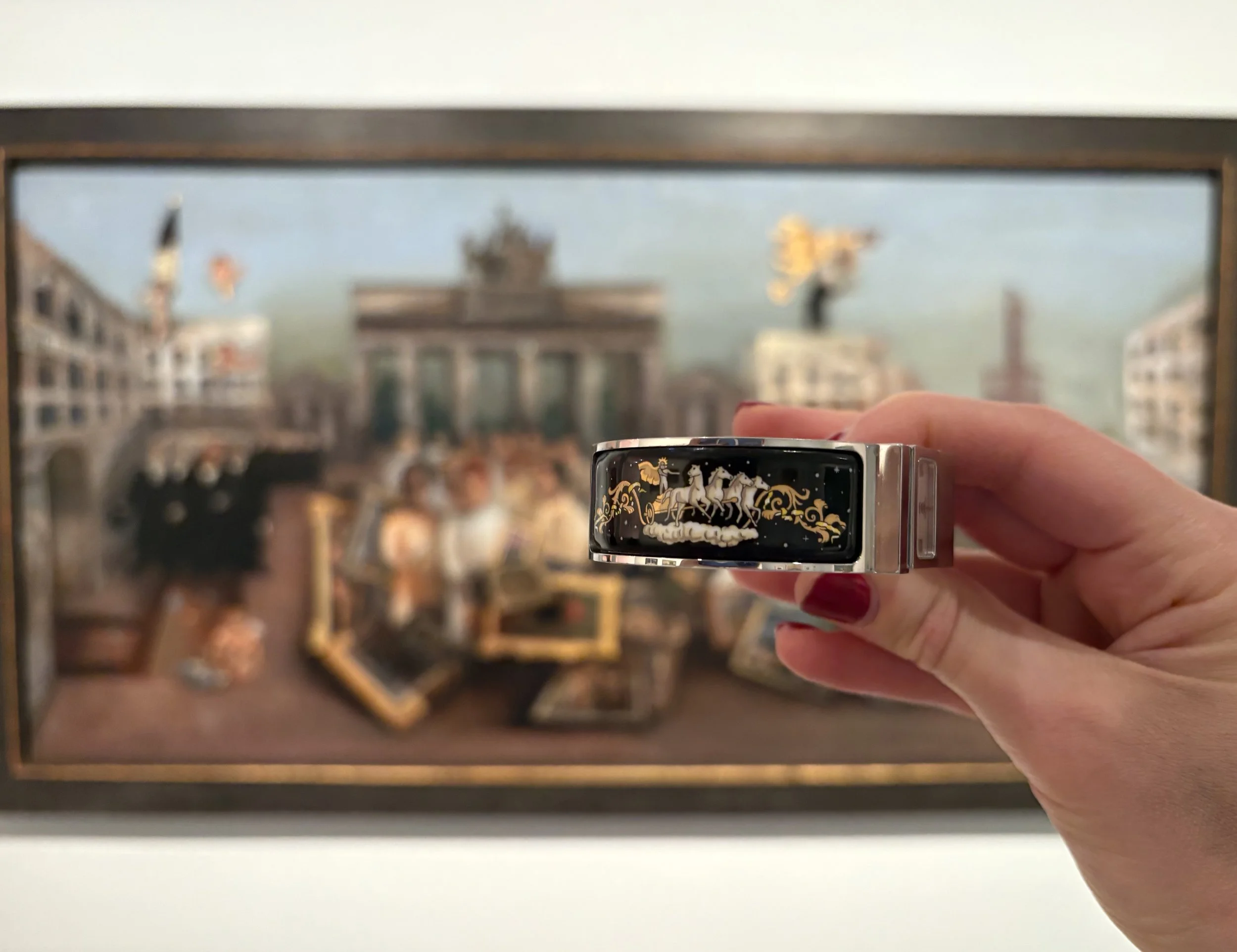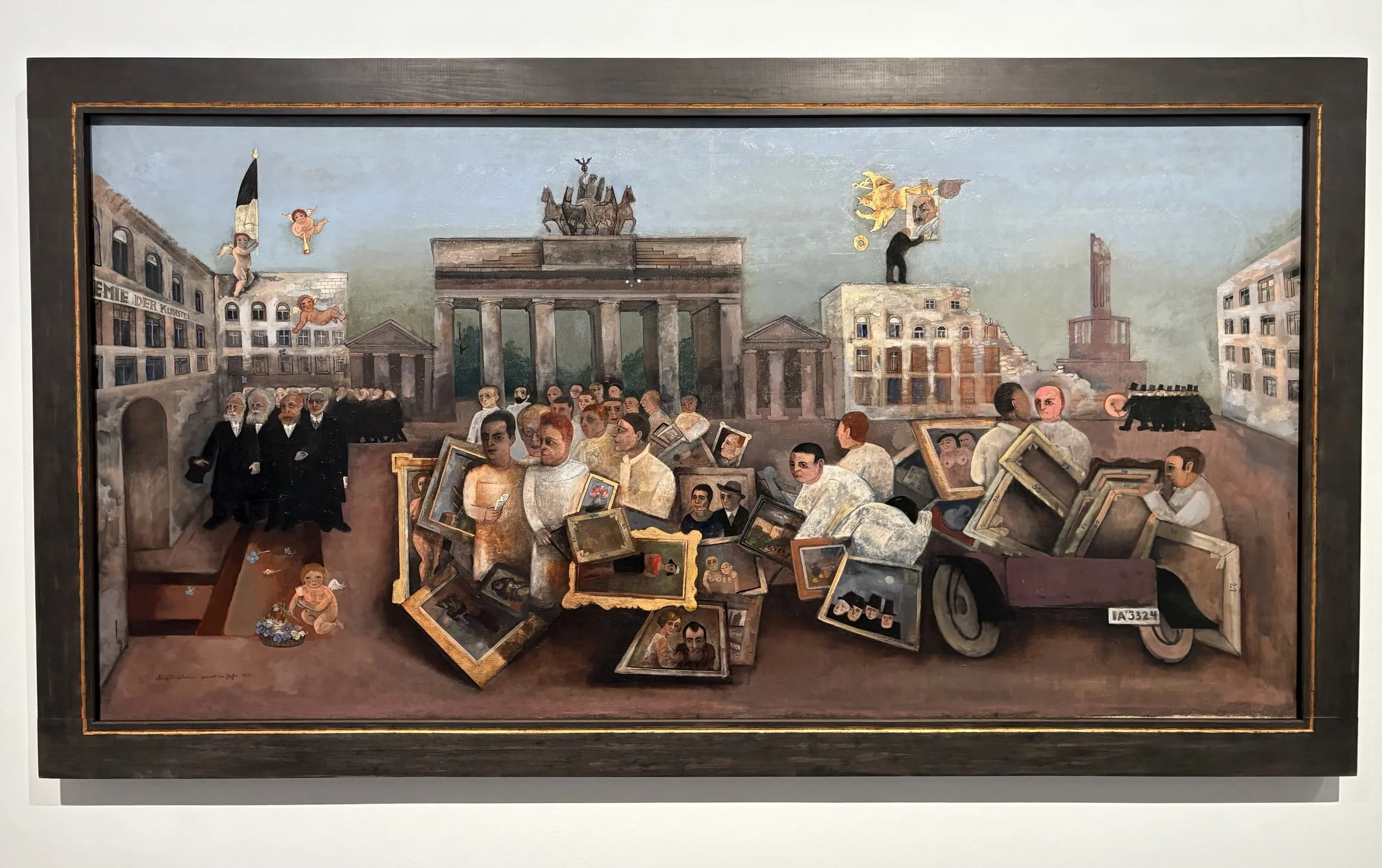The Restless Quadriga
I saw Felix Nussbaum’s The Folly Square today at the Berlinische Galerie. Painted in 1931, it shows the Brandenburg Gate as stage and witness: professors in black march into the Academy, young artists drag their work into the square, and above it all the quadriga hovers. Once a Prussian emblem, then Napoleon’s trophy, later reclaimed and redefined. The quadriga embodies Berlin’s unsettled history of power and display.
On (off) my wrist, a new (old) Hermès enamel bangle watch. Its band shows a cloaked charioteer driving four horses through a starry sky. Crafted in Hermès’ Austrian enamel workshops in the late 20th century, it fuses jewelry with timekeeping, myth with luxury. Like my other watches, it doesn’t tell time (I only wear broken watches, of course). The dial fades, the emblem endures. Nussbaum’s canvas and this enamel quadriga remind me that what matters is not the clock, but what rides across it.
Together, the painting and the watch reveal the quadriga’s restlessness. It refuses to stay fixed. Monument, myth, ornament, emblem of victory and ruin. Its meaning shifts with each surface it inhabits. In Berlin, that feels exact. Time, power, and symbols never stand still.

